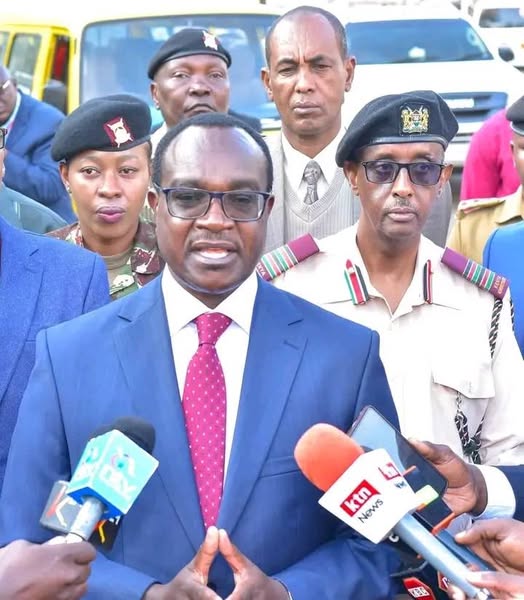Major Overhaul in Junior School Leadership: New Administration to be Led by Secondary School Teachers
The Kenyan education system is set for considerable transformations with the implementation of new leadership frameworks for junior secondary schools, which include Grades 7, 8, and 9. The Ministry of Education has revealed that beginning next year, teachers from secondary schools will assume leadership of these institutions, marking a significant departure from the existing system where primary school administrators supervise both primary and junior secondary education. This initiative is part of the broader Competency-Based Curriculum (CBC) reform designed to enhance the quality of education and refine management structures within schools nationwide.
Based on the Ministry’s recent guidelines, each junior secondary school will be managed by a principal, aided by deputy principals and senior masters, with specific roles assigned to various administrative and academic responsibilities. This reform indicates a delineation of duties for primary and junior secondary education, allowing primary school heads to concentrate on Grades 1-6, while a new cadre of seasoned secondary school leaders takes over the governance of junior secondary institutions.
A fundamental aspect of this reform is the creation of a Curriculum-Based Establishment (CBE), which will direct the administration of junior secondary schools. According to the Ministry’s documentation, several measures have been established to guarantee that the transition to this new leadership framework is seamless and effective. The CBE details how staffing for junior secondary schools will be coordinated, ensuring an adequate number of teachers is present to manage the assigned workload.
Workload for Teachers: Teachers in junior secondary schools will be required to manage a minimum of 27 lessons each week. This is necessary to guarantee that students receive high-quality instruction in accordance with the CBC. Nevertheless, the maximum class size for any instructor will be limited to prevent excessive workloads.
Administrative Roles: In instances where two deputy principals are designated at a school, one will be responsible for academic matters, while the other will handle administrative and other non-academic tasks. The principal will maintain a teaching load of 10 lessons per week, while deputies and senior masters will take on 12 lessons per week.
Establishment of Senior Positions: The creation of deputy principals and senior masters will depend on the school’s size and the quantity of streams it holds. Larger institutions will necessitate additional administrative personnel to oversee daily operations and ensure efficient functioning.
Boarding Facilities and House Teachers: Schools that provide boarding facilities will likewise have arrangements for house teachers (Senior Masters) who will oversee the welfare and discipline of students residing in the boarding section. These house teachers will be allocated according to the boarding facility’s capacity, with one teacher for every 270 students.
Lesson Allocation and Staffing: The Ministry has outlined a precise framework for ascertaining the number of teachers needed per learning area, ensuring that schools are sufficiently staffed based on the subjects offered and the number of lessons conducted each week.
The Ministry has established a structured approach for assessing the number of teachers needed for each learning subject. The lessons per subject are determined by summing the lessons conducted per grade for every subject. For example, the table included in the Ministry’s documentation displays the distribution for subjects such as English, Mathematics, Religious Education, and Social Studies. Each subject is assigned a particular number of lessons each week, and the total number of teachers needed is calculated based on the overall lessons provided across the grades.
For instance, English is designated 15 lessons across Grades 7, 8, and 9, and the total number of teachers required for this subject amounts to 0. 555. This number is derived by dividing the total lessons by 27, which represents the typical number of lessons that a teacher is anticipated to manage weekly.
The overall number of teachers needed by a school is assessed by summing the required teachers for each subject, ensuring that the school has adequate staff to accommodate the educational needs of the students. This method guarantees that schools are efficiently staffed and that teachers are not overwhelmed.
Implications of the New Administrative Changes
The transition to secondary school-led administration for junior secondary schools signifies a noteworthy change in the Kenyan education framework. The differentiation between leadership for primary and junior secondary schools facilitates more specialized and concentrated administration at each level. By designating experienced secondary school teachers to oversee junior secondary schools, the Ministry intends to improve the quality of education and guarantee that students receive optimal support during their shift from primary to secondary schooling.
A significant advantage of this new arrangement is the prospect of enhanced school management. Secondary school principals, given their expertise in overseeing larger student bodies and more intricate curricula, are more adept at facing the challenges posed by junior secondary schools. Furthermore, the establishment of deputy principals and senior masters will offer essential support to the principals, permitting them to focus on both academic and administrative responsibilities.
This new framework also fosters career advancement opportunities for secondary school teachers. By creating leadership roles in junior secondary schools, the Ministry is establishing a clear pathway for teachers to progress in their careers and take on greater responsibilities.
The Role of Primary School Heads
Although primary school heads will no longer oversee junior secondary schools, their function in managing Grades 1-6 remains vital. The emphasis on early childhood education and foundational learning stages is crucial for the success of the CBC, and primary school heads will be instrumental in ensuring that students are adequately prepared for the transition to junior secondary school.
The Ministry’s choice to separate the leadership of primary and junior secondary schools reflects the increasing complexity of the education system. By instituting distinct leadership structures for each level, the Ministry aims to ensure that both primary and junior secondary schools receive the necessary attention and resources to flourish.
